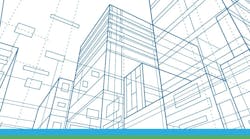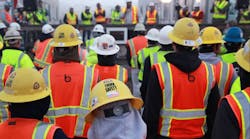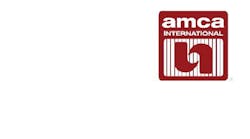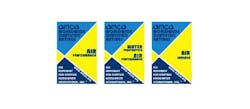Editor’s note: This article is adapted from the Air Movement and Control Association International Inc. white paper “Understanding the ANSI/AMCA Standard 500-L Tests,” which is available to download at no cost at www.amca.org/whitepapers.
Louvers are designed to protect air-intake and exhaust openings from the infiltration of unwanted water or particles while allowing airflow into a space, with different louver models offering different levels of performance. Because a louver’s performance is so critical, an obvious question is: When reviewing a louver’s submittal sheet, how can one be sure the performance stated on the sheet is accurate?
Air Movement and Control Association International Inc. publishes a standard, ANSI/AMCA Standard 500-L, Laboratory Methods of Testing Louvers for Rating, that outlines testing protocols for louvers.
Most recently published in 2015, ANSI/AMCA Standard 500-L is the standard to which all louvers are tested, and its test protocols are what the AMCA Certified Rating Program (CRP) uses to certify a louver’s reported data are accurate. If they are, AMCA allows the placement of a CRP seal (Figure 1) on the product.
ANSI/AMCA Standard 500-L Tests
ANSI/AMCA Standard 500-L covers five testing protocols:
• Pressure drop.
• Airflow leakage.
• Water penetration.
• Wind-driven rain.
• Wind-driven sand.
Each of these protocols is conducted by AMCA at one of AMCA’s accredited laboratories. Once a CRP participant’s louver has been tested and the accuracy of its ratings proven, the participant can display the test results, along with an image of the AMCA CRP seal that corresponds to the testing, on its submittal page. In some cases, louvers can be certified for multiple performance factors and display more than one seal.
Pressure drop. The ANSI/AMCA Standard 500-L test for pressure drop determines a louver’s resistance to airflow.
If you are considering a louver for a space containing equipment that needs air to operate effectively, the louver’s pressure-drop-test results should be one of the first things you examine.
The test protocol is to take five or more determinations in a desired range of airflow rates using equal increments. For each determination, one reading is taken for:
• Outlet duct static pressure.
• Inlet duct static pressure.
• Discharge-chamber static pressure.
• Inlet-chamber static pressure.
During testing, ambient temperature is maintained between 50°F and 104°F (10°C and 40°C). The testing requires a complete set of air measurements for one setting of airflow and pressure drop. Most often, a louver is tested with air flowing in both directions; however, exceptions are made for louvers specified for airflow in only one direction. The test for operable louvers begins with the lowest airflow value; it is left to find its own equilibrium position in the pressure differential.
For pressure drop, ANSI/AMCA Standard 500-L specifies a 48-in.-by-48-in. (1,219 mm by 1,219 mm) louver sample be tested. The information on the louver’s submittal page reflects the results of this sample. This is important to understand because, with a larger section size, a pressure-drop test would reflect a lessened resistance to airflow. Conversely, a smaller section size would show increased resistance.
Final reports include test data, along with information on: blade orientation, blade action, blade position (open or closed), airflow direction, personnel, model, louver type, size, free area, and test figure.
Airflow leakage. The test for air leakage determines the relationship between airflow-leakage rate and static pressure for a louver mounted in a test chamber.
As with the pressure-drop test, five or more determinations covering a desired range during equilibrium conditions are taken at equal increments of pressure differential.
Testers use precisely measured weights and measure distance with devices having divisions of 0.04 in. (1.0 mm).
For this test, multiple louver samples are required. Testers use the following criteria for samples:
• Minimum width by maximum height.
• Maximum width by minimum height.
• Maximum width by maximum height.
When completed, the report will include: method of closure, blade orientation, blade action, airflow direction, personnel, date, test identification number, laboratory name, laboratory location, reference to ANSI/AMCA Standard 500-L, and test figure.
Engineers concerned with building envelope should look for louvers that bear the AMCA CRP seal for leakage. In these cases, a damper may not provide adequate leakage protection.
Water penetration. The water-penetration test determines the intake-air velocity at which water will begin to penetrate a louver. A common misconception is the test reports how much water (i.e., wind-driven rain) penetrates a louver during service conditions. There are service conditions under which wind-driven rain is not a factor. This test is meant to show how a louver will perform under typical, rather than heavy-rain or windy, conditions.
For this testing protocol, water simulating a light, vertical rainfall is dropped in front of a louver at a rate of:
• 4 in. (100 mm) per hour, minimum.
• 0.25 gpm per linear foot (3.28 L/m per linear meter), which simulates water coming down an exterior wall.
The size of the louver testing sample is 48 in. by 48 in. At the back of the testing chamber, behind the louver, an intake fan is positioned. The intake fan attempts to draw water through the louver. This is known as a still-air test.
During testing, the beginning point of water penetration is determined at the free-area intake velocity. For the minimum point, the test is run at conditions in which the water collected on the floor of the testing chamber does not exceed 0.01 oz per square foot (3 g per square meter) of free area. The finished results are cataloged on a louver submittal sheet and represented with a graph.
A report for a water-penetration test includes: personnel, date, test identification number, laboratory name, laboratory location, reference to ANSI/AMCA Standard 500-L, test figure, model, louver-type size, free area, and any appurtenances, such as drain pans.
The test is important for specifiers because, in many cases, the space behind the louver needs to be kept dry, particularly when adequate drainage does not exist.
Wind-driven rain. It is not uncommon to see a louver submittal sheet display the CRP seal for both water penetration and wind driven rain. The latter certifies the louver underwent a test simulating storm conditions, with the results indicating the louver’s ability to block water from getting into the space behind it.
For this test, a meter-by-meter core sample is required. Inside the testing chamber, a high-powered fan is set up in front of the louver to simulate:
• 29-mph (12.96 m/s) winds.
• 50-mph (22.35 m/s) winds.
During the test, nozzles spray water at the louver, simulating an external rainfall of 3 in. (5.08 cm) per hour when the fan is running at 29 mph and at 8 in. (20.32 cm) per hour when the fan is running at 50 mph. The area behind the louver is fully pressurized, with an exhaust fan attempting to draw water through the louver’s blades.
The minimum duration of the test is 30 min, with test values noted at standardized intervals no more than 10 min apart. The test is complete once four consecutive readings of values within steady-state tolerance have been observed.
As the test is conducted, the following values are observed, measured, and recorded:
• Water-supply rate.
• Water-penetration rate.
• Airflow rate through the louver (except for no-airflow test).
The performance of the louver is marked by the amount of water that penetrated it during testing.
After the test, a class is assigned to the louver to indicate its effectiveness in preventing the egress of water. The classes are:
• Class A: 99 percent to 100 percent effective.
• Class B: 95 percent to 98.9 percent effective.
• Class C: 80 percent to 94.9 percent effective.
• Class D: Anything below 80 percent effective.
At the conclusion of the testing protocol, the report will show: personnel, date, test identification number, laboratory name, laboratory location, reference to ANSI/AMCA Standard 500-L, test figure, model, and any appurtenances, such as drain pans.
The wind-driven-rain test is valuable because, throughout the United States and other parts of the world, storm conditions can cause water damage to the interior of buildings. Often, specifiers will look to a Class A louver if an installation site is in an area where storms are likely.
It is rare to see a manufacturer display anything other than a Class A or Class B rating on a submittal sheet.
Wind-driven sand. When air systems that lie behind louvers are exposed to sand particles, their filters can clog prematurely. For this reason, a testing protocol for wind-driven sand was added to ANSI/AMCA Standard 500-L. Adopted in December 2015, this test measures a louver’s ability to resist intrusive sand.
This test introduces airborne dry sand particles at different airflow rates to a louver. The louver is mounted and sealed within a sand-injection chamber, so all sand ingress measured has come through the louver’s blades only.
The louver testing sample is 48.03 in. by 48.03 in. (1,220 mm by 1,220 mm). Sand is distributed uniformly through a sand-injector blower while pressure drop is documented.
During the testing, free-area velocity is observed and recorded at 20-sec intervals. After all of the sand has been injected into the test duct, the exhaust fan and sand-injector blower run for another two minutes. The sand prevented from egressing past the louver is collected by a vacuum cleaner, and the difference between the sand blown at the louver and the sand rejected by the louver is documented.
The effectiveness of the louver in keeping sand from egressing into the space behind it is represented by classes, in a manner similar to the test for wind-driven rain:
• Class A: 90 percent to 100 percent effective.
• Class B: 80 percent to 89.9 percent effective.
• Class C: 70 percent to 79.9 percent effective.
• Class D: Anything below 70 percent effective.
At the conclusion of the testing protocol, the report will show: date; test identification number; laboratory name; laboratory location; reference to ANSI/AMCA Standard 500-L; test figure; louver model name; core area; actual frame outer size; number of front blades; number of rear blades; louver free area; any appurtenances, such as sand collector and weighing device; and personnel who performed the test.
Certification
Manufacturers offering AMCA-certified louvers have done more than test their products in accordance with ANSI/AMCA Standard 500-L. They have had AMCA or an accredited third party confirm the reported data are accurate. These companies have followed the guidelines in AMCA Publication 511, Certified Ratings Program—Product Rating Manual for Air Control Devices, which outlines the program for certifying louvers following testing.
Summary
The protocols outlined in ANSI/AMCA Standard 500-L were created to establish uniform laboratory test methods for louvers from any manufacturer. These protocols cover pressure drop, air leakage, water penetration, wind-driven rain, and wind-driven sand. Louvers tested to these protocols have undergone the first step in earning the AMCA seal, which signifies third-party verification of test data, which specifiers should look for on louver submittal sheets.
If you find yourself in the position of asking, “How can we be sure the performance stated on the sheet is accurate?” Know the answer starts with ANSI/AMCA Standard 500-L and its test methods.










